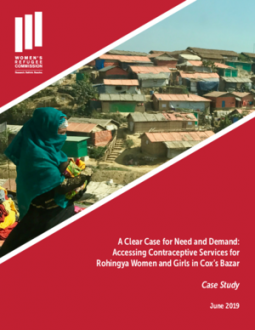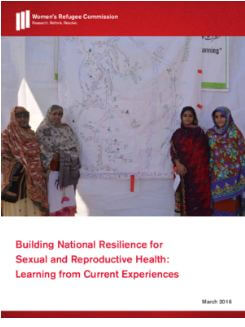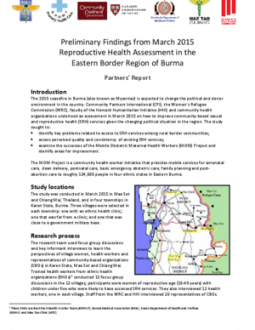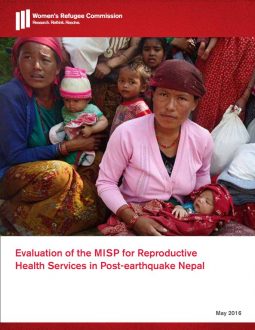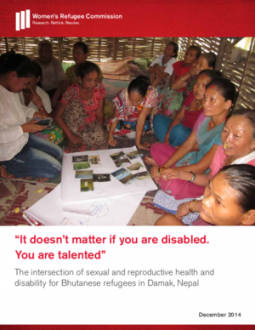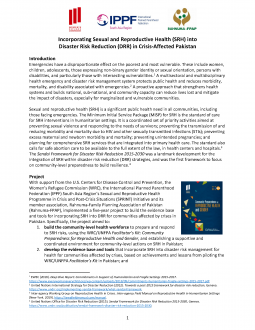
Incorporating Sexual and Reproductive Health and Rights into Disaster Risk Reduction in Crisis-Affected Pakistan
PublishedWith support from the US Centers for Disease Control and Prevention, the Women’s Refugee Commission, the International Planned Parenthood Federation South Asia Region’s Sexual and Reproductive Health and Rights Programme in Crisis and Post-Crisis Situations Initiative and its member association, Rahnuma-Family Planning Association of Pakistan, implemented a five-year project to build the evidence base and tools for incorporating sexual and reproductive health (SRH) into disaster risk reduction (DRR) for communities affected by crises in Pakistan.
Emergencies have a disproportionate effect on the poorest and most vulnerable. These include women, children, adolescents, those expressing non-binary gender identity or sexual orientation, persons with disabilities, and particularly those with intersecting vulnerabilities.(1) Sexual and reproductive health is a significant public health need in all communities, including those facing emergencies. A multisectoral and multidisciplinary health emergency and disaster risk management system protects public health and reduces morbidity, mortality, and disability associated with emergencies.(2)


